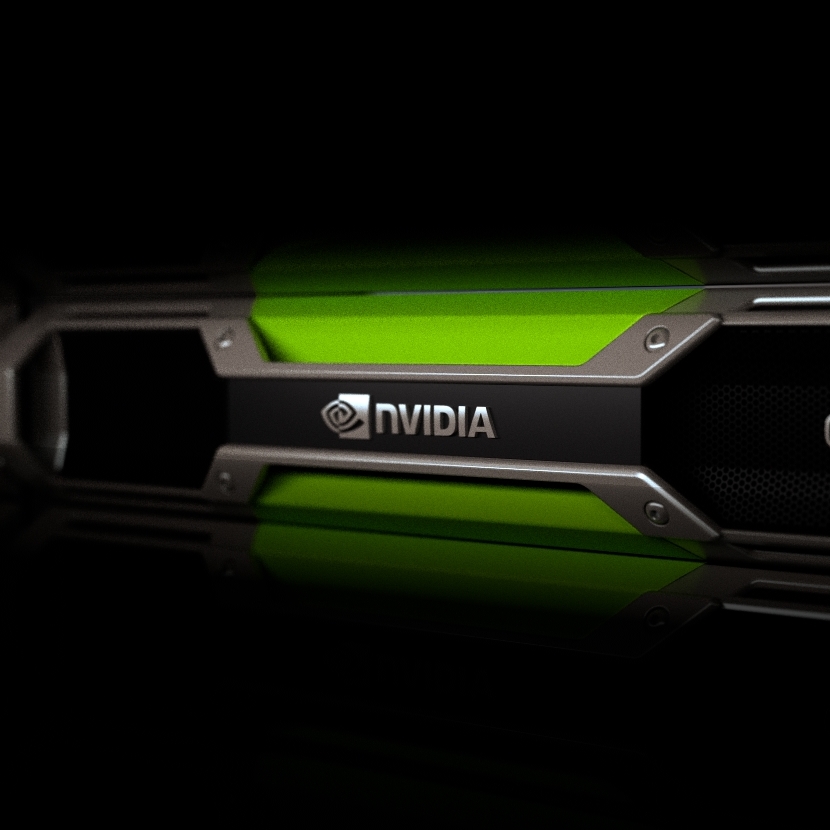Technology
2 Must-Own Semiconductor Stocks as PC Gaming Sales Expected to Grow 50%

Published:
Last Updated:

Savvy tech investors are well aware of the many applications for semiconductors, and those uses continue to expand, especially with crypto-mining a new and growing avenue. But one area that continues to show outsized growth is the chips that are used in the gaming market, a market that the analysts at Merrill Lynch feel can grow 27% annually in the period from 2017 to 2020 estimated.
In addition to that staggering figure, the Merrill Lynch team also feels that between easier supply conditions, and emerging pent-up demand, personal computer gaming sales can grow an astonishing 50% year over year in 2018. While one company dominates this space, another chip company is gaining ground fast, and both stocks are top picks at Merrill Lynch.
This stock was recently added to the Merrill Lynch US 1 list of top stocks to Buy and is the firm’s top pick in the chip arena. Nvidia Corp. (NASDAQ: NVDA) is one of the leaders when it comes to supplying graphics processing technology for the 3D graphics market, including desktop graphics processors and gaming consoles.
Nvidia is also moving into visual computing chips for cars, mobile devices and supercomputers. The company has been able to use its ability to leverage past investments, with a more controlled spending structure ahead on unified, which enables strong cash flow that is allowing a focus on capital return, which is currently estimated to be $1 billion next year.
Merrill Lynch has been bullish on the company for some time and noted this when adding the stock to its US 1 list:
Adding NVIDIA to US1 list, the recent selloff has enhanced buying opportunity for unique tech franchise with multiple 10 times growth drivers. The stock is sensitive to risk-off in high-growth stocks, but new second half products in gaming, Artificial intelligence/data center can catalyze recovery. Overstated noise from crypto mining (offset by gaming strength) and autonomous car testing (immaterial for 2 years).
The team also made these observations in the new report on gaming’s huge potential for the company:
NVIDIA remains our top pick given its relative leadership (79%/75% revenue/unit share). The next catalyst in gaming could be Computex/E3 trade shows in June where the company could launch new gaming cards (Volta/Turing GTX 11xx series). The first products based on Nvidia’s latest GPU architecture (Pascal GPU) were first launched in June 2016 and a steady stream of products – both at the high and low-end of the price/performance spectrum – have been launched since. In aggregate, these products have tended to carry 20-40% higher launch average selling prices versus NVIDIA’s last-generation (Maxwell) cards.
The Merrill Lynch price target for the shares is a whopping $340, and the Wall Street consensus target is $275.77. The shares closed Monday at $264.85.
After years of frustrating performance, Advanced Micro Devices Inc. (NYSE: AMD) appears to have turned the corner and is a hot commodity on Wall Street. AMD is one of the largest suppliers of PC microprocessors and graphics processors worldwide to computing original equipment manufacturers. The company’s main product lines include desktop, notebook and graphics processors, and embedded/semi-custom chips.
Last year the company released its first major offering in five years, the Ryzen chipset, which many feel is uniquely positioned to compete with the big players like Intel and Nvidia in the $50 billion total addressable market for personal computers, gaming, artificial intelligence and servers.
The company posted huge results and Merrill Lynch said this at the time:
First quarter sales and earnings per share of $1.65 billion and $0.11 were 5% and 17% ahead of expectations owing to strength in new accretive products (Ryzen, EPYC, and Vega), which drove gross margins 30 basis points ahead of estimates. AMD’s second quarter sales and earnings per share outlook was also ahead by 9%/ and 30% on continued strength particularly in Ryzen and EPYC, which are expected to drive a gross margins of 37% almost 1% ahead of the Street.
The current report noted:
Key takeaways from the first quarter (1) excluding crypto, AMD gained unit (+160 basis points or 1.6% quarter over quarter to 24.7%) and revenue share (+460 basis points or 4.6% to 21.2%) in PC gaming from pick up in premium Vega cards. (2) first quarter set a new record for overall dGPU revenues (+107% year over year) on record high average selling prices (+66% YoY). In particular, we highlight the company’s drastic mix shift in first quarter which we believe could be the start of a sustained mix shift to more premium products. Per Mercury research, a record 44% of AMD’s desktop dGPU shipments in Q1 were in graphics cards with a $300 or higher ASP. We suspect this largely captures a steep pick up in Vega GPU shipments since most of the company’s Polaris/earlier products are built into graphics cards that carry an ASP of less than $300. In the fourth quarter of 2017, shipments of $300+ graphics cards accounted for just 15% of overall AMD desktop units which implies sharp (200%+) quarter over quarter growth.
Merrill Lynch has a $17 price target, and the consensus price objective is $14.18. Shares closed Monday at $14.85.
Needless to say, both stocks have had huge runs and could be susceptible to a large downdraft in the market. Therefore they are only suitable for extremely aggressive accounts. With that caveat in mind, these are the undisputed leaders in a growing marketplace and look poised to remain there for the foreseeable future.
Thank you for reading! Have some feedback for us?
Contact the 24/7 Wall St. editorial team.